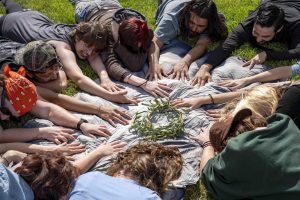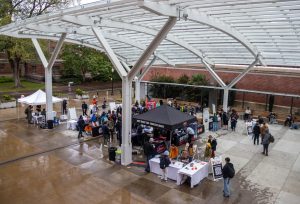Celebrations of the Season
December 13, 2016
Tis the season for many celebrations worldwide. Here is some insight to the history and the ways people are celebrating this season!
1. Hanukkah
Hanukkah, also known as Chanukah (which means dedication), is the Jewish wintertime holiday. It is often referred to as the Festival of Lights as it is celebrated through a nightly lighting of the menorah. This holiday marks Judah Maccabee and his followers’ success in defeating the Syrian army and the rededication of the Holy Temple in 165 B.C. It is said that while Maccabee and his people reclaimed the Holy Temple and lit the menorah, it was a miracle that the one day supply of oil found within the Temple lasted for eight nights. This is why in celebration of Hanukkah the menorah is lit for eight consecutive nights, starting on the 25th day of Kislev to the second day of Tevet. Not only is the symbolic menorah lit, but families also gather round to play with a dreidel and feast on oil fried foods, symbolizing the miracle of the olive oil.
2. Christmas
An African-American and Pan-African holiday, Kwanzaa celebrates family, community and culture. It takes place on December 26th until January 1st. Translated, the holiday means first fruits and stems from the first harvest in Africa. Kwanzaa builds on the five fundamental activities of Continental African first fruit celebrations which are ingathering, reverence, commemoration, recommitment and celebration. It is not a religious holiday, but a cultural one. Kwanzaa was recorded in African history as far back as Ancient Egypt, but was officially created in 1966 by Maulana Karenga. Kwanzaa was created to introduce and reinforce the Nguzo Saba, The Seven Principles. These seven African values are Umoja (Unity), Kujichagulia (Self-Determination), Ujima (Collective Work and Responsibility), Ujamaa (Cooperative Economics), Nia (Purpose), Kuumba (Creativity) and Imani (Faith). Ultimately, this holiday’s purpose is to reaffirm and reinforce the bonds between African people and the recovery and reconstruction of the African culture during the Liberation Movement.
Sources:
Photography by Erwan Hesry (via unsplash.com)






